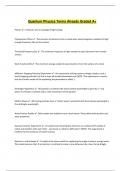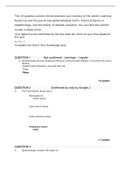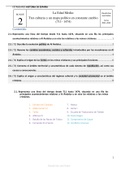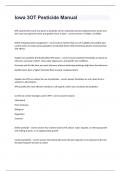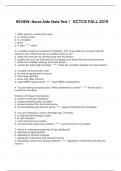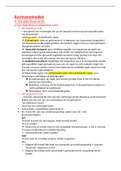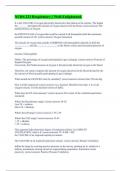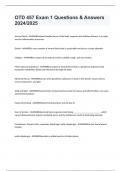Tentamen (uitwerkingen)
Quantum Physics Terms Already Graded A+
- Vak
- Instelling
Quantum Physics Terms Already Graded A+ Photon ️A discrete unit or package of light energy Photoelectric Effect ️The emission of electrons from a metal when electromagnetic radiation of high enough frequency falls on the surface Threshold Frequency (f₀) ️The minimum frequency of lig...
[Meer zien]
